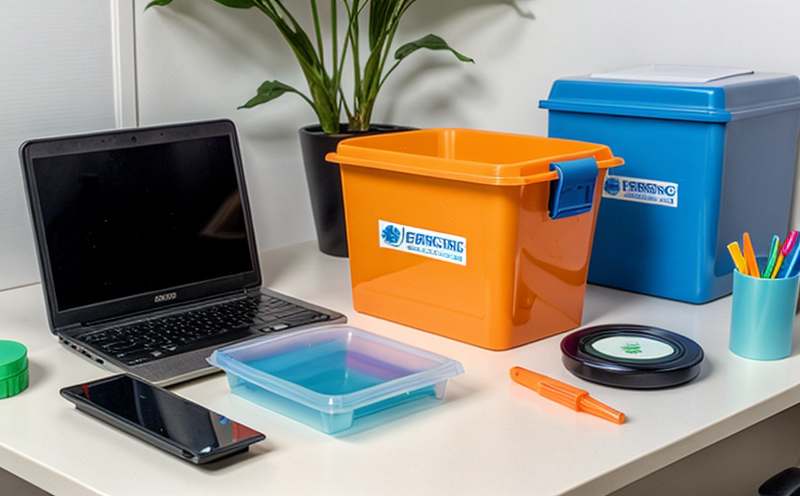ASTM E84 Surface Burning Characteristics Testing of Office Plastics
The ASTM E84 standard is one of the most widely recognized and applied methods for assessing the flame spread characteristics of materials used in construction, particularly those that are exposed to potential fire hazards. This testing method provides critical data on the surface burning behavior of plastics commonly found in office environments.
ASTM E84 involves a test apparatus known as the "Vertical Burning Apparatus," which simulates the conditions under which materials might be exposed to flame and assesses their tendency to spread flames. The test specimens, typically small pieces of plastic or composite materials, are placed between two steel panels. One panel is ignited with a specific heat source, and the flame behavior on both sides of the specimen is observed.
The primary goal of ASTM E84 testing in office plastics is to determine how effectively these materials prevent the spread of fire. This information is crucial for ensuring that office furniture, partitions, and other components meet safety standards and contribute to a safer working environment. The test results provide data on flame spread index (FSI) values, which indicate the rate at which flames travel across the specimen surface.
For R&D engineers involved in developing new plastics for office applications, ASTM E84 testing can help identify areas where modifications are needed to improve fire resistance. Compliance officers rely on these test results to ensure that their products comply with local and international safety regulations, such as those outlined by the NFPA (National Fire Protection Association) or other relevant bodies.
ASTM E84 is particularly important in sectors like furniture manufacturing and interior design, where aesthetic considerations often conflict with functional ones. By using materials that pass ASTM E84 testing, manufacturers can balance these competing demands while ensuring the safety of their products.
Applied Standards
| Standard | Description |
|---|---|
| ASTM E84-19 Standard Test Method for Surface Burning Characteristics of Building Materials | This standard provides the apparatus and procedure for determining the flame spread index (FSI) and smoke developed index (SDI) of materials used in construction. It is essential for assessing the fire performance of plastics, particularly those found in office environments. |
| EN 13501-1:2011+A1:2016 European Standard on Fire Safety | This standard specifies requirements for the design and construction of buildings with respect to fire safety. It incorporates ASTM E84 as a key reference in assessing materials used within office spaces. |
| Standard | Description |
|---|---|
| NFPA 285 Standard on Surface Burning Characteristics of Exterior Building Components | This standard, while primarily focused on exterior building components, provides additional insights into fire performance that are relevant for indoor applications as well. It complements ASTM E84 by offering more detailed criteria for assessing flame spread and smoke development. |
| IEC 60332-1:2020 Fire Retardancy of Electrical Insulation Materials | This standard addresses the fire performance of electrical insulation materials, many of which are also used in office settings. It helps ensure that these materials meet stringent flame retardant requirements. |
Benefits
The primary benefit of ASTM E84 surface burning characteristics testing lies in its ability to provide clear, quantifiable data on the fire performance of plastics used in office environments. This information is invaluable for several reasons:
- Enhanced Safety: By identifying materials with superior flame spread and smoke development properties, ASTM E84 helps ensure that offices are safer places to work.
- Compliance Assurance: Many regulations mandate the use of fire-resistant plastics in certain applications. Testing according to ASTM E84 ensures compliance with these requirements.
- R&D Optimization: R&D engineers can use test results to refine their materials and develop new products that offer better performance across multiple criteria.
- Customer Satisfaction: Providing products that meet safety standards can significantly enhance customer trust and satisfaction, potentially leading to repeat business and positive reviews.
Customer Impact and Satisfaction
The impact of ASTM E84 testing on customers cannot be overstated. Compliance with these standards not only ensures the safety of office environments but also enhances customer satisfaction by demonstrating a commitment to quality and safety:
- Regulatory Compliance: Many offices are required to use fire-resistant plastics that meet specific standards like ASTM E84. Ensuring compliance helps avoid legal issues and penalties.
- Employee Safety: By reducing the risk of fire, the use of compliant materials can save lives in case of emergencies.
- Sustainable Product Development: Testing according to ASTM E84 encourages manufacturers to innovate safer products that meet both current and future standards.
- Positive Reputation: Companies that prioritize safety through testing gain a positive reputation, which can translate into long-term business success.





